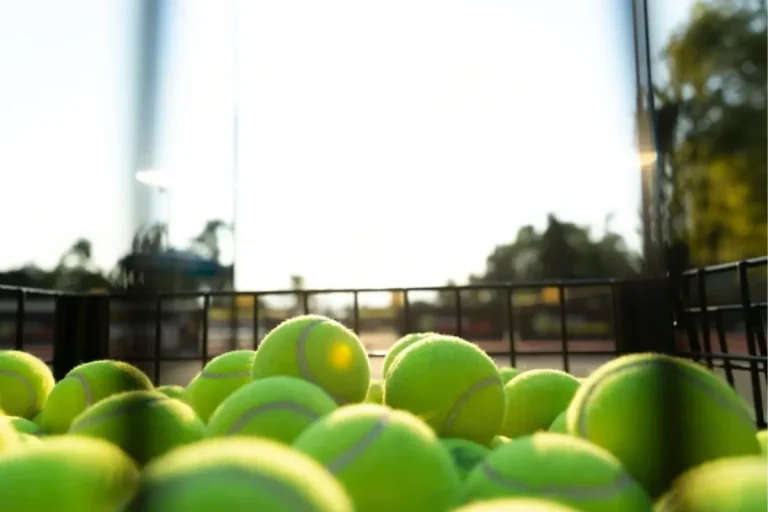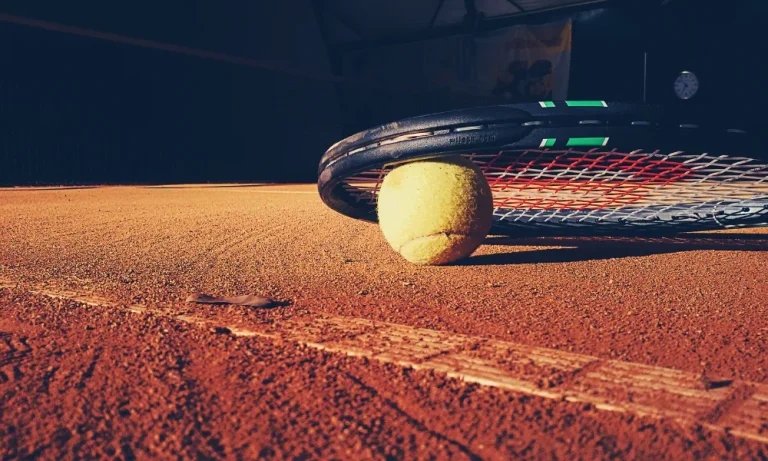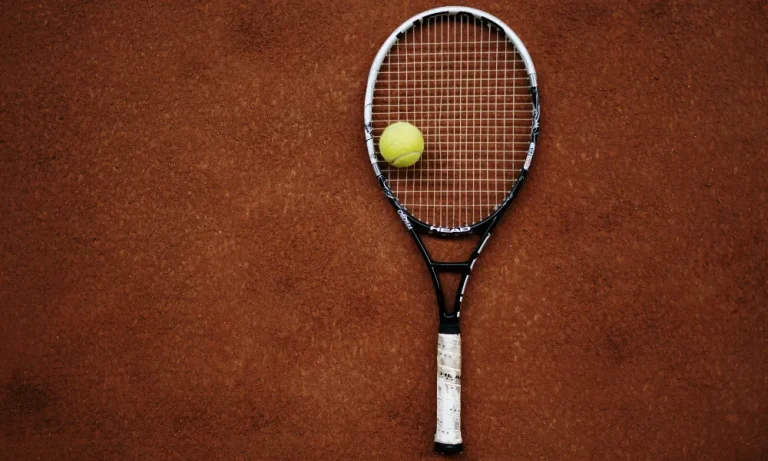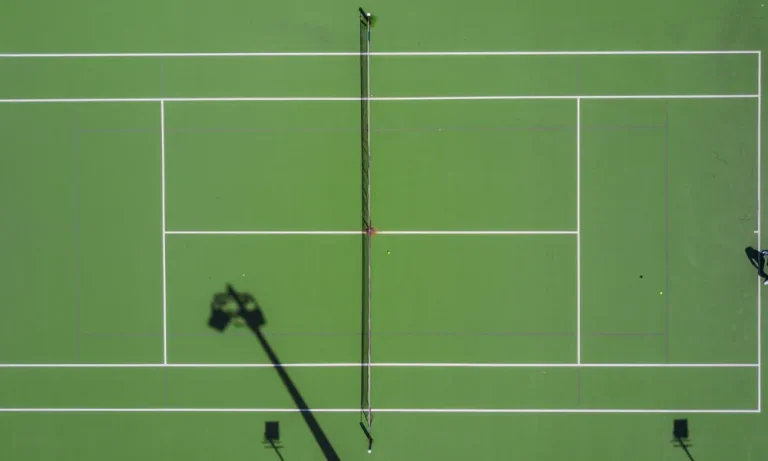Why Tennis Is Hard To Learn?
Tennis, oh tennis! The sport that has captivated hearts and minds for centuries. But have you ever wondered why mastering it seems like an uphill battle? Fear not, for in this blog post, we’ll unravel the secrets behind why tennis is hard to learn. From the complex mechanics to the mental challenges, get ready to dive into the world of tennis and discover the unique obstacles that make it such a formidable endeavor.
The Complex Mechanics of Tennis
Tennis is not just a game of hitting a ball back and forth. It involves a complex set of mechanics that require skill, precision, and coordination.
Fundamentals: Grip, Footwork, and Strokes
To master tennis, one must first understand the fundamental techniques. The grip, how you hold the racket, is crucial for generating power and control. The proper grip allows you to maneuver the racket with finesse and accuracy.
Footwork is another essential aspect of tennis. Efficient movement on the court is vital for reaching the ball quickly and maintaining balance during shots. The intricate footwork patterns and split-second adjustments require practice and agility.
Strokes, such as forehand, backhand, and serve, form the foundation of tennis. Each stroke has its own unique mechanics, requiring a combination of strength, timing, and technique. The proper execution of these strokes is essential for consistent and powerful shots.
Coordination and Efficiency in Movement
Tennis demands a high level of coordination between the upper and lower body. The fluidity of movement is key to positioning yourself for each shot. The challenge lies in coordinating your footwork, body rotation, and racket swing seamlessly, all while maintaining balance and reacting to the opponent’s shots.
Physical Demands and Athleticism
Tennis is a physically demanding sport that requires endurance, speed, and strength. The constant running, quick changes of direction, and explosive movements put a strain on the body. Endurance is crucial to sustain long matches, while speed and agility help in reaching difficult shots. The athleticism needed to excel in tennis cannot be underestimated.
Mental Challenges in Tennis
Tennis matches can be mentally intense, with pressure mounting as each point is played. Players must possess the mental fortitude to stay focused, block out distractions, and perform under pressure. The ability to handle the stress and maintain composure is crucial for success on the court.
Decision-Making Skills, Strategy, and Shot Selection
Tennis is a game of strategy and decision-making. Players need to analyze their opponent’s weaknesses, anticipate their moves, and adjust their strategy accordingly. The ability to make split-second decisions, such as shot selection, can determine the outcome of a point. Strategic thinking and adaptability are key in outsmarting opponents.
Mental Resilience: Bouncing Back from Setbacks
In tennis, setbacks are inevitable. Whether it’s a missed shot or losing a set, players must possess mental resilience to bounce back quickly. It’s essential to stay focused, learn from mistakes, and maintain a positive mindset. Resilience allows players to overcome obstacles and regain momentum to turn the tide of a match.
The Importance of Timing and Precision
In the fast-paced world of tennis, timing and precision are crucial elements that can make or break a player’s performance.
Precise Timing: Hitting the Ball
Timing is everything when it comes to hitting the ball in tennis. The ability to synchronize your swing with the incoming ball is essential for a clean and powerful shot. Hitting the ball too early or too late can result in mishits, loss of control, and missed opportunities. Precise timing allows players to make solid contact and dictate the direction and pace of the shot.
Consistently Executing Accurate Shots
Consistency in executing accurate shots is a never-ending pursuit for tennis players. It requires a combination of technical proficiency and mental focus. The challenge lies in replicating the perfect timing and precision consistently, point after point, match after match. Achieving this level of consistency demands hours of practice, honing muscle memory, and maintaining mental discipline.
Challenges of Different Surfaces and Conditions
Tennis is played on various surfaces like clay, grass, and hard courts, each presenting its unique challenges. Different surfaces affect the ball’s bounce, speed, and grip, making timing and precision even more critical. Additionally, external conditions like wind, temperature, and humidity can further impact the game. Adapting to these variables and adjusting your timing and precision accordingly is a significant aspect of a successful tennis player’s repertoire.
The Role of Practice and Training
Becoming a skilled tennis player is not an overnight success story. It requires dedication, commitment, and a lot of hard work.
Dedication and Commitment
Improving in tennis demands unwavering dedication and commitment. It’s about putting in the hours, day after day, to refine your skills and develop a deep understanding of the game. The road to success is paved with countless practice sessions, sweat, and perseverance. It’s the willingness to push through challenges and stay committed that sets apart the best players from the rest.
Regular Practice and Drills
Regular practice is the foundation of improvement in tennis. It allows players to hone their technique, build muscle memory, and develop consistency. Through repetitive drills, players can refine their strokes, footwork, and court positioning. Regular practice not only improves physical skills but also enhances mental focus, concentration, and decision-making abilities.
Role of Coaching and Professional Guidance
Coaching plays a vital role in a tennis player’s journey. A knowledgeable coach provides valuable insights, corrects technical flaws, and offers strategic guidance. They help players identify areas for improvement and tailor training programs to address specific weaknesses. Professional guidance helps players navigate challenges, set realistic goals, and stay motivated on their path to success.
Overcoming Common Obstacles
Tennis can be an exhilarating and challenging sport, especially for beginner and intermediate players.
Beginner and intermediate players often encounter similar obstacles on their tennis journey. These may include difficulties with footwork, timing, consistency, shot selection, and mental focus. These challenges can be frustrating, but they are also opportunities for growth and improvement.
To overcome these obstacles, players can adopt several tips and strategies. Firstly, focusing on footwork and movement can greatly enhance overall performance. Developing good footwork habits and agility can help players reach the ball effectively and maintain balance during shots.
Consistency can be improved through regular practice and repetition. By practicing specific drills that target consistency, players can gradually develop muscle memory and refine their technique.
Shot selection and decision-making skills can be enhanced by studying the game and gaining a deeper understanding of strategic play. Analyzing professional matches, seeking advice from experienced players, and experimenting with different shots during practice can all contribute to better decision-making on the court.
Conclusion
It’s no secret that learning tennis can be challenging. From mastering the technique to understanding strategic play, there are many aspects to tackle. However, with dedication, practice, and the right guidance, the rewards of becoming a skilled tennis player are worth the effort. So, embrace the challenge, keep practicing, and enjoy the journey of learning this exciting sport.
FAQs: Why Tennis Is Hard To Learn
What makes tennis a difficult sport to learn?
Tennis requires mastering complex techniques like proper grip, footwork, and timing. It also involves strategic thinking and quick decision-making, making it challenging for beginners.
How does the speed of the game contribute to the difficulty of learning tennis?
Tennis is a fast-paced sport, with balls traveling at high speeds. This requires players to have quick reflexes, agility, and precise timing, which can be difficult to develop.
What are some common technical challenges that beginners face in learning tennis?
Beginners often struggle with controlling their shots, achieving consistent ball contact, and maintaining proper form. These technical aspects take time and practice to master.
Is it necessary to have good physical fitness to learn tennis effectively?
While tennis does require a certain level of physical fitness, it is also a sport that can help improve fitness over time. However, having a basic level of fitness can make learning the sport more manageable.
How important is it to receive professional coaching when learning tennis?
Professional coaching is highly beneficial for learning tennis. Coaches can provide valuable guidance, correct technical flaws, teach proper techniques, and help players develop a solid foundation, making the learning process smoother and more effective.






